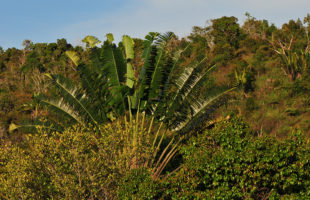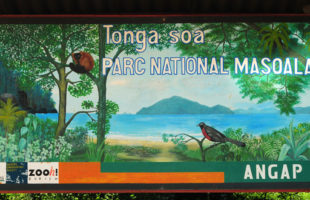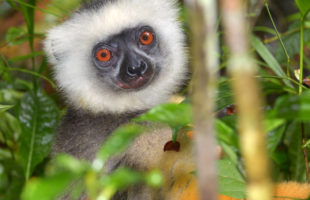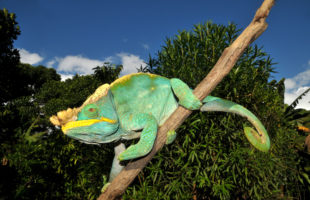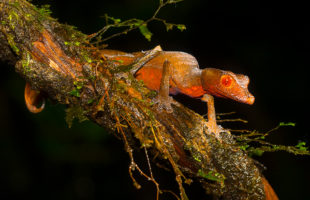The Silky Sifaka (Propithecus candidus) is one of the most beautiful and special lemurs of Madagascar, but also one of the rarest. There are only about 250 sexually mature silk sifakas left in Madagascar, otherwise they do not occur anywhere else in the world. For comparison: In Asia alone there are still around 3000 to 5000 full-grown specimens of tigers …
LesenSchlagwort-Archiv: rainforest
The Tree of Travelers
The Ravenala, better known as the tree of travelers, belongs to the strelitzia family, despite resembling a palm tree. Although it is now common all over the world and is even cultivated as an ornamental plant in some homes, it originated in Madagascar and only occurs naturally there. Ravenalas grow from six to thirty meters and are particularly known for …
LesenDarwin’s orchid
As early as 1802, French colonialists in Madagascar discovered a unique, white-flowering orchid whose waxy blossom had a diameter of a good 12 cm. They had never seen anything like it, and so it was also a Frenchman named Du Petit-Thouars, who 20 years later wrote down a description of the peculiar flower for the first time. He called it …
LesenMasoala national park
Masoala: Masoala means “eyes of the forest”. The national park owes this name to the Aye-Aye (Daubentonia madagascariensis), whose eyes ghostly glow like two large yellow spheres in the light cone of the torch at night. Unfortunately, night walks in national parks are currently forbidden, so that only the name testifies to this magnificent experience. Location: The Masola National Park …
LesenNo life without the Ocotillo: Verreaux’ Sifakas
The Verreaux’ Sifakas (Propithecus verreauxi) lives in the south of Madagascar and belongs to the few lemurs that successfully colonize the hot and hostile spiny forests. It is a very adaptable species that can survive even in very small forest areas. It can even be found in some lowland rainforests in the southeast of the eighth continent. In the northwest, the …
LesenA diadem of fur: Diademed Sifakas
The Diademed Sifaka (Propithecus diadema) is with a total length of 105 cm and a weight between five and seven kilograms one of the largest lemurs of Madagascar and because of its unusual fur colors also one of the most beautiful. His face is framed by long white fur, which looks a bit like a tiara and gave these lemurs …
LesenRanomafana National Park
Ranomafana: Ranomafana owes its name to its thermal springs, which constantly pump warm water (in Malagasy rano mafana) into the valley. Location: Ranomafana National Park is located between the two regions of Haute Matsiatra and Vatovavy-Fitovinany, about 420 kilometers south-east of the capital Antananarivo. For the journey via the RN7 from the capital, you need about one and a half …
LesenThe animal that brings death
No other animal in Madagascar has as many myths and fairy tales as the Aye-Aye (Daubentonia madagascariensis). Throughout the northern half of Madagascar, it is fady, which means taboo. Unfortunately, this fady does not mean that the animals are not touched by Madagascans, as with chameleons, for example. Instead, many inhabitants of Madagascar believe that the encounter with an aye-aye …
LesenWhy the largest lemur in the world is called Babakoto
Once upon a time in a small village in Madagascar, a Bezanozano man (a tribe living in the east of the country) prepared a small basket. He asked his little son Koto to come with him and together they wandered deep into the jungle to find honey. After a few hours they found a bee hive on a high rosewood …
LesenThe Satanic Leaf-Tailed Gecko
A small but very pretty gecko lives well camouflaged in the rainforests of the central east and southeast in the highlands of Madagascar: the Satanic Leaf-Tailed Gecko (Uroplatus phantasticus). The little guy got his name from biologist George Boulenger as early as 1888. The Belgian first described the species and chose the name because of the bizarre appearance of the …
Lesen MADAMAGAZINE Your Magazine about Madagascar
MADAMAGAZINE Your Magazine about Madagascar


